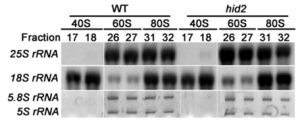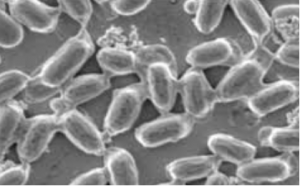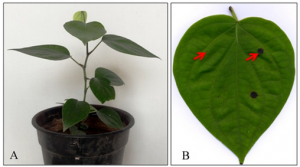|
m6A modification plays an integral role in mRNA stability and translation during pattern-triggered immunity
Tuesday, 2024/08/20 | 08:22:05
|
|
Tianyuan Chen, George H. Greene, Jonathan Motley, Musoki Mwimba, Guan Zheng Luo, Guoyong Xu, Sargis Karapetyan, Yezi Xiang, Chang Liu, Chuan He, and Xinnian Dong PNAS; August 8, 2024; 121 (33) e2411100121 SignificancePattern-triggered immunity (PTI) is a rapid, transient immune response in plants involving reprogramming the transcriptome and the translatome. Though N6-methyladenosine (m6A) modification has been well known to affect the fate of messenger RNA (mRNA), whether it plays a role in regulating plant immunity remained unclear. Our study demonstrates that m6A modification of mRNA is crucial for the induction of PTI in plants. Mutants of m6A “writer” components and “readers” showed compromised resistance to pathogens. Through multiomics analysis, we uncovered dual role of m6A during PTI in promoting rapid turnover of defense-related transcripts while enhancing their translation through association with different m6A readers to orchestrate a swift and effective defense response while minimizing penalty to plant growth. AbstractPlants employ distinct mechanisms to respond to environmental changes. Modification of mRNA by N 6-methyladenosine (m6A), known to affect the fate of mRNA, may be one such mechanism to reprogram mRNA processing and translatability upon stress. However, it is difficult to distinguish a direct role from a pleiotropic effect for this modification due to its prevalence in RNA. Through characterization of the transient knockdown-mutants of m6A writer components and mutants of specific m6A readers, we demonstrate the essential role that m6A plays in basal resistance and pattern-triggered immunity (PTI). A global m6A profiling of mock and PTI-induced Arabidopsis plants as well as formaldehyde fixation and cross-linking immunoprecipitation-sequencing of the m6A reader, EVOLUTIONARILY CONSERVED C-TERMINAL REGION2 (ECT2) showed that while dynamic changes in m6A modification and binding by ECT2 were detected upon PTI induction, most of the m6A sites and their association with ECT2 remained static. Interestingly, RNA degradation assay identified a dual role of m6A in stabilizing the overall transcriptome while facilitating rapid turnover of immune-induced mRNAs during PTI. Moreover, polysome profiling showed that m6A enhances immune-associated translation by binding to the ECT2/3/4 readers. We propose that m6A plays a positive role in plant immunity by destabilizing defense mRNAs while enhancing their translation efficiency to create a transient surge in the production of defense proteins.
See https://www.pnas.org/doi/10.1073/pnas.2411100121
Figure 1: The m6A-deficient plants have compromised immune phenotypes. (A) Basal resistance to the oomycete pathogen Hyaloperonospora arabidopsidis Noco2 (Hpa Noco2). 12-d-old seedlings were sprayed with Hpa Noco2 spores (3 to 5 × 104 spores/mL). Spores were collected and quantified 7 d after infection (n = 5). gFIP37-GFP/fip37-4, complementation line with the genomic FIP37 promoter and coding sequence fused to GFP transformed in the fip37-4 background. (B and C) Basal resistance to the bacterial pathogen Pseudomonas syringae pv maculicola ES4326 (Psm ES4326). Leaves from 3.5-wk-old plants were infiltrated with Psm ES4326 (OD600nm = 0.0001). Bacterial growth was scored on Day 0 (n = 4) and Day 3 (n = 8). For the DEX:siMTA silencing lines (two independent transformants), plants were pre-treated with 50 µM Dexamethasone (+DEX) or H2O (−DEX) 1 d prior to infection. npr1, the nonexpresser of pathogenesis-related 1 mutant known to have enhanced disease susceptibility. (D) The MTA transcript abundance in DEX:siMTA plants 24 h after DEX treatment compared to the DEX:YFP control. (E and F) elf18-induced resistance to bacteria. Leaves from 3.5-wk-old plants were infiltrated with 1 µM elf18 or mock (H2O). After 1 d, the same leaves were infiltrated with Psm ES4326 (OD600nm = 0.001) and bacterial growth was scored 2 d later (n = 8). DEX:siMTA plants were sprayed with DEX 1 d prior to elf18 infiltration. All error bars represent 95% CI. Data (A–D) were analyzed by the Student’s t test. Two-way ANOVA with the Bonferroni post hoc test was performed for the comparison between mutants and WT (E) or DEX:YFP (F). **P < 0.01; ***P < 0.001; ns, not significant. Experiments were repeated at least twice with similar results.
|
|
|
|
[ Other News ]___________________________________________________
|


 Curently online :
Curently online :
 Total visitors :
Total visitors :
(339).png)



















